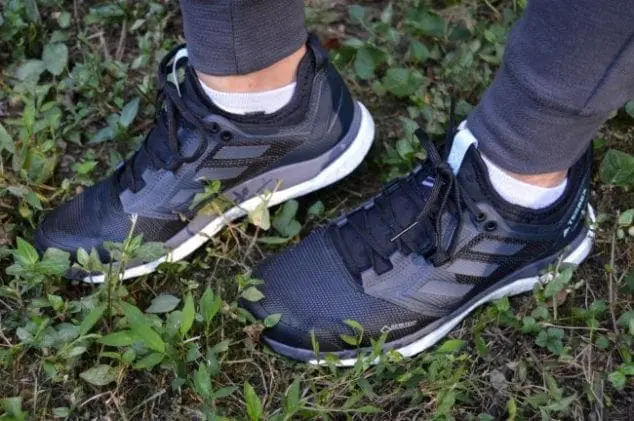Are you ready to hit the trails and explore the great outdoors? Before you lace up your hiking boots and packing your backpack, make sure you’re equipped with the essential gear you need for a successful adventure. In this comprehensive guide, we’ll walk you through everything you need to know about gearing up for your next hiking expedition. From clothing essentials to navigation tools and safety gear, we’ve got you covered. So grab your gear, let’s get started on the ultimate hiking gear guide to ensure you have a safe and enjoyable outdoor experience.
Your Hiking Essentials List
When heading out for a hike it’s important to pack the right essentials. Here’s a list to consider. These are the right hiking essentials for beginners and experienced trail hikers as well because being prepared is important to the novice and expert hiker alike. Remember to adjust your pack according to the length and difficulty of your hike, and always let someone know your hiking plans and expected return time. As you prepare for your next outdoor escapade, remember: “It’s better to have it and not need it, than to need it and not have it.” This post is brought to you by adidas.

A windstopper jacket sure can come in handy. These are wind resistant and water repellent.
1. Layering Up: Clothing Essentials
When it comes to gearing up for a hiking adventure, clothing is just as important as any other piece of equipment. Proper layering can make all the difference in keeping you comfortable and protected from the elements. As you prepare for your next outdoor excursion, consider these clothing essentials to ensure you’re ready for whatever the trail may bring.
Starting with a moisture-wicking base layer is key to regulating your body temperature and keeping sweat away from your skin. Look for materials like merino wool or synthetic blends that will keep you dry and comfortable throughout your hike. On top of your base layer, add a mid-layer such as sweatshirt hoodies or fleece to provide warmth in cooler temperatures. For your outer layer, opt for a waterproof and windproof jacket to shield you from rain, snow, and/or strong winds. Breathability is also crucial to prevent overheating and moisture buildup inside your jacket.
For your bottoms – choose quick-drying, durable pants or shorts that offer freedom of movement and protection from brush and rocks.
With the right clothing essentials, you’ll be prepared to tackle any terrain and weather conditions that come your way.

2. Hiking Footwear
Finding the perfect fit is essential for a successful hiking excursion. Your choice of hiking footwear can make or break your adventure, so it’s crucial to select a pair that offers the right combination of comfort, support, and durability. Whether you prefer hiking boots, trail shoes, or sandals, ensure that your footwear provides proper arch support, traction, and protection for your feet. Finding the perfect fit will not only enhance your comfort on the trail but also help prevent blisters, soreness, and injuries. With the right footwear, you’ll be ready to tackle any terrain with confidence, from rocky trails to muddy paths.
Hiking Shoes vs Hiking Boots
Choosing between hiking shoes and hiking boots depends on the type of hike you’re planning and your personal preference. Here are some key differences to consider:
- Ankle Support: Hiking boots typically offer more ankle support due to their higher cut, which can be beneficial on rough or uneven terrain. Hiking shoes, on the other hand, are lower cut and provide less ankle support but may be more comfortable for some people.
- Weight: Hiking shoes are generally lighter than hiking boots, which can be more comfortable for long hikes or for those who prefer a lighter feel on their feet.
- Breathability: Hiking shoes are often more breathable than hiking boots, which can be more comfortable in hot weather or for those with sweaty feet.
I personally prefer waterproof women hiking shoes and feel they are the way to go for most summer hikes. Ultimately, the choice between hiking shoes and hiking boots comes down to personal preference and the specific requirements of your hike. If you’re unsure, consider trying on both types of footwear and walking around to see which feels more comfortable and supportive for your feet.
3. Choosing the Right Backpack
A hiking pack is essential hiking gear. When it comes to choosing the right backpack for your hiking adventure, there are a few key factors to consider. Firstly, think about the size of the pack – make sure it can comfortably hold all your gear without being too heavy or cumbersome. Look for a pack with adjustable straps and padding to ensure a proper fit and minimize strain on your back and shoulders. Additionally, consider features like multiple compartments, water bottle pockets, and compression straps for organization and convenience on the trail.
By selecting a backpack that meets your needs and preferences, you’ll be well-equipped for a successful and comfortable hiking experience. A 20 L hiking backpack is ideal for short day hiking trips while a 40 L hiking backpack would be ideal for overnight hiking essentials. A 60 L pack is perfect for extended camping trips. Now that you have picked the perfect hiking backpack for you, here is what to put inside.

The above hiking trail is not far from Nashville, the Stillhouse Hollow Falls Trail.
4. Hydration and Nutrition: Staying Fueled on the Trail
Next, staying hydrated and properly fueled is essential for powering through long hikes. Remember to pack plenty of WATER and snacks to keep your energy levels up during your journey. Look for lightweight and portable options like hydration packs and trail mix to stay hydrated and satisfied on the trail. With the right combination of hydration and nutrition, you’ll be ready to tackle any hiking adventure with confidence and stamina. You often use more energy than you would think even on a fairly short hike.
5. Navigational Tools and Safety Gear
Navigational tools and safety gear are essential components to consider before hitting the trails. A reliable paper map, compass, and/or GPS device can help keep you on track and prevent you from getting lost in unfamiliar terrain. It’s also crucial to pack a small first aid kit, and emergency whistle, in case of emergencies or unexpected situations. By being prepared with the right navigational tools and safety gear, you can ensure a smooth and safe hiking experience. Next, let’s explore the importance of sun protection on your outdoor adventure.
6. Sun Protection
When embarking on a hiking adventure, it’s crucial to consider the importance of sun protection. The sun’s powerful rays can cause sunburn, heat exhaustion, and long-term skin damage if proper precautions aren’t taken. To protect yourself from harmful UV rays, consider wearing a wide-brimmed hat, sunglasses, and lightweight, breathable clothing that provides coverage. Additionally, don’t forget to apply sunscreen with a high SPF rating to exposed skin before heading out on the trail. By prioritizing sun protection, you can ensure a safe and enjoyable hiking experience.

The above trail is hiking near me in the Smoky Mountains on the Hen Wallow Falls Trail.
7. Bug Repellent
In addition to protecting yourself from the sun’s harmful rays, it’s also important to consider the annoyance and potential dangers posed by insects while hiking. Insect repellent is an essential item to keep pesky bugs at bay and prevent bites that could lead to discomfort or even disease. Whether using a bug spray, lotion, or wearable device, be sure to choose a repellent that is effective against the specific insects you are likely to encounter on your adventure. By taking this simple precaution, you can focus on enjoying the beauty of nature without constantly swatting away bugs.
8. Light Source
When venturing out into the wilderness for a hike, one essential item you won’t want to overlook is a reliable light source. As the sun sets or if you find yourself on the trail after dark, having a flashlight or headlamp can make all the difference in ensuring you stay safe and can navigate your surroundings effectively. Look for a lightweight option that won’t weigh you down but still provides a bright enough beam to light your way. Additionally, consider bringing extra batteries or a portable charger to ensure your light source remains operational throughout your adventure. With a dependable light source in your gear arsenal, you can confidently tackle any hike, day or night.
9. Multi-Tool Or Knife
When heading out on a hiking adventure, it’s a good idea to consider the versatility and utility of carrying a multi-tool or knife. These tools can come in handy in a variety of situations, from cutting branches for a makeshift shelter to repairing gear on the go. A multi-tool typically includes a variety of tools such as pliers, scissors, screwdrivers, and more, while a knife can be used for cutting, slicing, and even protection if needed. Having a multi-tool or knife on hand can provide peace of mind knowing that you are prepared for whatever comes your way on the trail. You probably won’t need this but you will be glad to have it in unexpected situations.
10. Hiking Sticks Hiking Poles
Another valuable addition to your hiking gear can be hiking sticks, also known as trekking poles or hiking poles. Hiking sticks provide additional points of contact with the ground, which can improve your balance and stability. This is especially good on uneven or slippery terrain. Using hiking poles can help you maintain a steady pace and reduce fatigue. This means you can hike longer distances with less effort. When choosing hiking sticks or poles, look for adjustable ones that can be customized to your height and terrain. Consider lightweight materials like aluminum or carbon fiber for ease of use.
Conclusion
In summation, gearing up with the hiking essentials outlined in this guide will not only enhance your hiking experience but also ensure your safety on the trail. From extra food to extra layers and footwear to navigation tools and sun protection, each item plays a critical role in making your adventure a success. So, next time you hit the trails, don’t forget to pack these must-have items. They will help you be prepared to embark on a journey filled with exploration and excitement. As my grandmother always told me, “It is better safe than sorry.” Are there hiking must-haves that you now want to get for yourself? Or would you add anything else to this list of ten essentials?
Related Posts:
Hiking With Kids: Benefits And Tips

Emily says
Such a useful article. Now I know everything to put in my day pack from a rain jacket to a Swiss army knife and a gps unit. I really appreciate ur work.
Emmett says
For longer hikes I would suggest an extra socks and lip balm.
Rozgar says
This hiking essentials guide is a must-read for outdoor enthusiasts! Covering everything from safety gear to hydration essentials, it’s the ultimate companion for any adventure. Thanks for compiling such a comprehensive list – it’s sure to make our next hike even more enjoyable and safe!